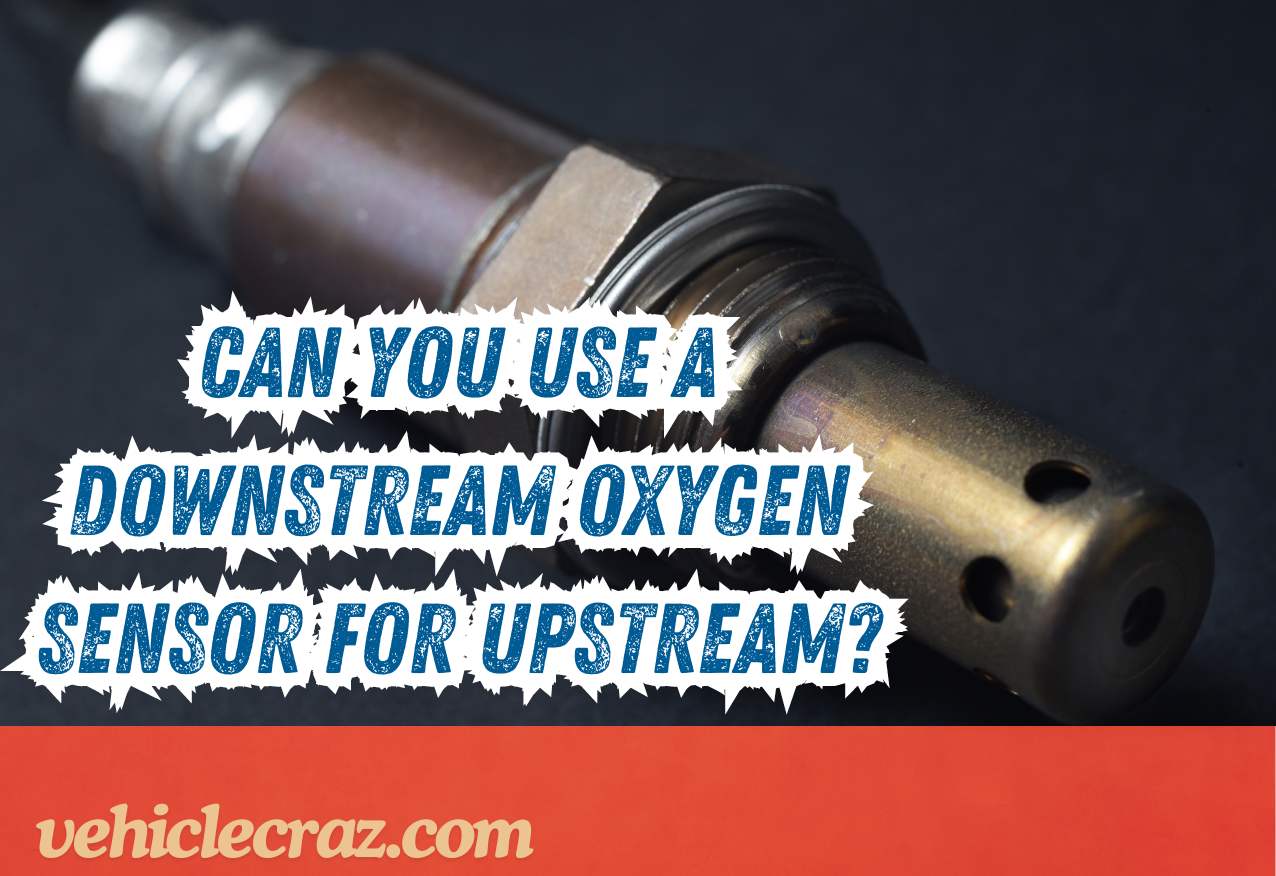Can You Use A Downstream Oxygen Sensor For Upstream?
Upstream sensors monitor oxygen levels in the exhaust gases before they enter the catalytic converter, ensuring the engine operates efficiently. Downstream sensors, placed after the catalytic converter, verify its performance by assessing emissions output. The question is, can you use a downstream oxygen sensor for upstream? Let’s figure it out!
Table of Contents
ToggleWhat is a Downstream Oxygen Sensor and How They Work?
A downstream oxygen sensor is located after the catalytic converter in a vehicle’s exhaust system. Its primary function is to monitor the efficiency of the catalytic converter by measuring oxygen levels in the exhaust gases after they have passed through this emissions control device.
Unlike upstream sensors, which help adjust the air-fuel mixture for optimal engine performance, downstream sensors primarily ensure that the catalytic converter is operating effectively to reduce harmful emissions. They relay data to the vehicle’s engine control unit (ECU), which adjusts fuel injection and ignition timing based on these readings.
This feedback loop helps maintain the converter’s ability to convert harmful pollutants like carbon monoxide and nitrogen oxides into less harmful substances like carbon dioxide and nitrogen gas. Thus, downstream oxygen sensors play a crucial role in maintaining vehicle emissions compliance and overall environmental performance.
What is An Upstream Oxygen Sensor and How They Work?
An upstream oxygen sensor is positioned before the catalytic converter in a vehicle’s exhaust system. Its primary function is to measure the amount of oxygen in the exhaust gases exiting the engine cylinders. This data is crucial for the engine control unit (ECU) to adjust the air-fuel mixture in real-time, ensuring efficient combustion.
The sensor operates by generating a voltage signal based on the oxygen content in the exhaust gas. It contains a ceramic element coated with porous platinum and surrounded by a reference air chamber.
Oxygen passing through the sensor causes a chemical reaction that generates voltage. The ECU interprets this voltage to determine whether the engine is running rich (too much fuel) or lean (too little fuel) and adjusts the fuel injection accordingly.
By constantly monitoring oxygen levels, upstream oxygen sensors help optimize fuel efficiency, reduce emissions, and enhance engine performance. Their precise measurements contribute to maintaining the engine’s operational efficiency and minimizing environmental impact.
Can You Use A Downstream Oxygen Sensor For Upstream?
Using a downstream oxygen sensor in place of an upstream sensor is generally not recommended due to several technical and functional differences between the two sensor types.
Design and Functionality
Downstream oxygen sensors are designed to monitor oxygen levels after the catalytic converter. They operate at higher temperatures and are calibrated to detect different exhaust gas characteristics compared to upstream sensors.
Upstream sensors, on the other hand, are specifically engineered to measure oxygen levels before the catalytic converter, influencing the engine’s fuel-air mixture for optimal combustion.
Compatibility Issues
Placing a downstream sensor upstream can lead to inaccurate readings and improper fuel-air mixture adjustments. This mismatch can result in engine performance issues such as rough idling, poor fuel efficiency, and increased emissions.
The downstream sensor may not respond correctly to the varying oxygen levels and temperatures found upstream, leading to incorrect feedback to the vehicle’s engine control unit (ECU).
Diagnostic and Compliance Concerns
Modern vehicles rely on precise sensor data for effective emissions control and compliance with environmental regulations. Using a sensor in an unintended position could trigger error codes (DTCs) in the vehicle’s onboard diagnostics (OBD) system, indicating a malfunction or emission control system problem. This can result in the vehicle failing emissions tests and potentially violating regulatory standards.
What are the Risks of Using a Downstream Sensor Upstream?
Using a downstream oxygen sensor in an upstream position poses several risks and potential issues.
Inaccurate Readings
Downstream sensors are calibrated differently from upstream sensors to monitor oxygen levels after the catalytic converter. When used upstream, they may provide inaccurate readings of exhaust gas composition before it reaches the converter. This can lead to improper fuel-air mixture adjustments by the engine control unit (ECU), potentially causing engine performance issues.
Engine Performance Problems
Incorrect readings can result in the engine running either too rich (excess fuel) or too lean (insufficient fuel), leading to rough idling, hesitation during acceleration, decreased fuel efficiency, and overall reduced engine performance.
Emissions Non-Compliance
Modern vehicles rely on accurate sensor data to meet emissions standards. Using an incorrect sensor type can lead to increased emissions of harmful pollutants, potentially causing the vehicle to fail emissions tests and violating environmental regulations.
Damage to Catalytic Converter
Improper sensor placement and inaccurate readings may affect the efficiency of the catalytic converter. Over time, this can lead to increased wear and potential premature failure of the converter, which is critical for reducing emissions.
Diagnostic Trouble Codes (DTCs)
The vehicle’s onboard diagnostics (OBD) system may detect the mismatched sensor and trigger error codes. This can illuminate the check engine light and require diagnostic troubleshooting to identify and rectify the issue.
How Can I Tell If an Oxygen Sensor is Upstream or Downstream?
Identifying whether an oxygen sensor is upstream or downstream involves several key methods. Firstly, sensors are often labeled or marked by manufacturers to indicate their intended position, such as “Upstream” or “Downstream.”
Secondly, they may differ in cable length and configuration, with upstream sensors typically having shorter cables located closer to the engine, while downstream sensors have longer cables placed further along the exhaust system after the catalytic converter.
Additionally, their physical location in the exhaust system provides a clear distinction: upstream sensors are near the exhaust manifold or on the exhaust pipe before the catalytic converter, whereas downstream sensors are positioned after the converter.
Consulting the vehicle’s service manual or parts catalog and comparing replacement sensors with the original can also confirm their correct placement. Ensuring proper sensor installation is crucial for maintaining engine efficiency, emissions compliance, and the longevity of emission control components.


I’m Alex, a seasoned mechanical teacher with over 20 years of hands-on experience in Australia. My passion for all things automotive has driven me to establish this blog, aiming to share my wealth of knowledge and expertise with fellow enthusiasts, DIYers, and anyone keen on understanding the mechanics behind the machines we rely on daily.







